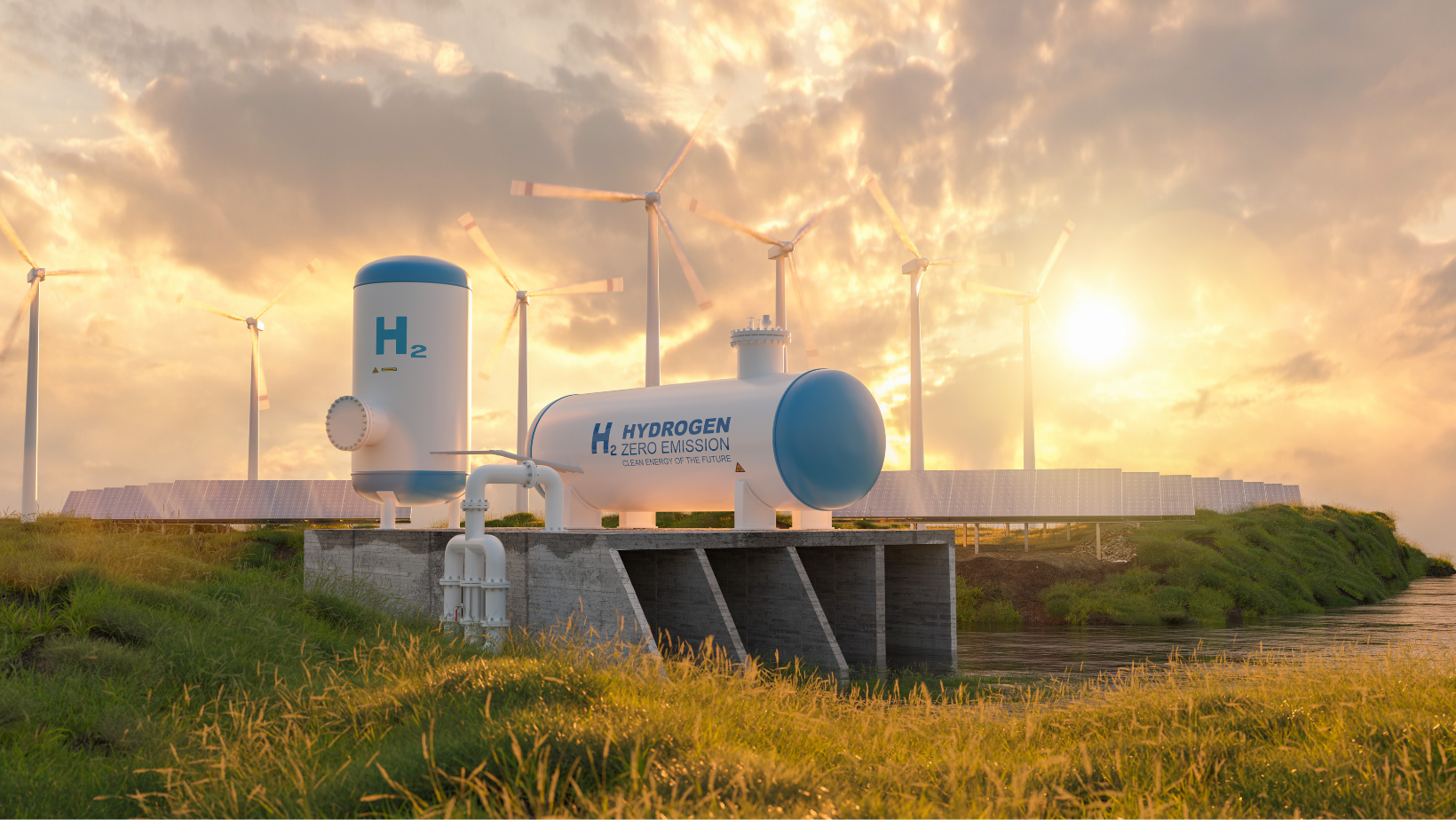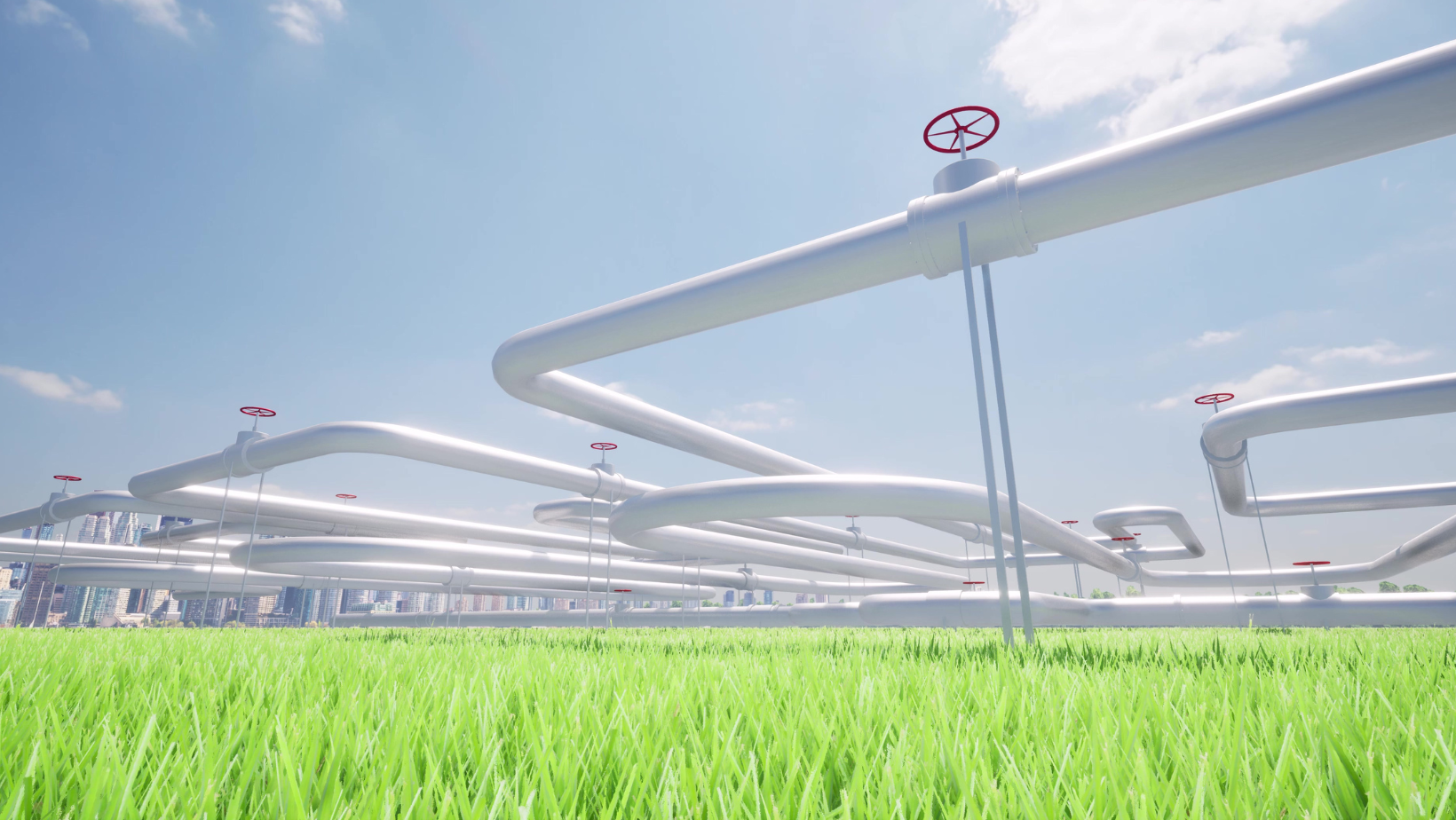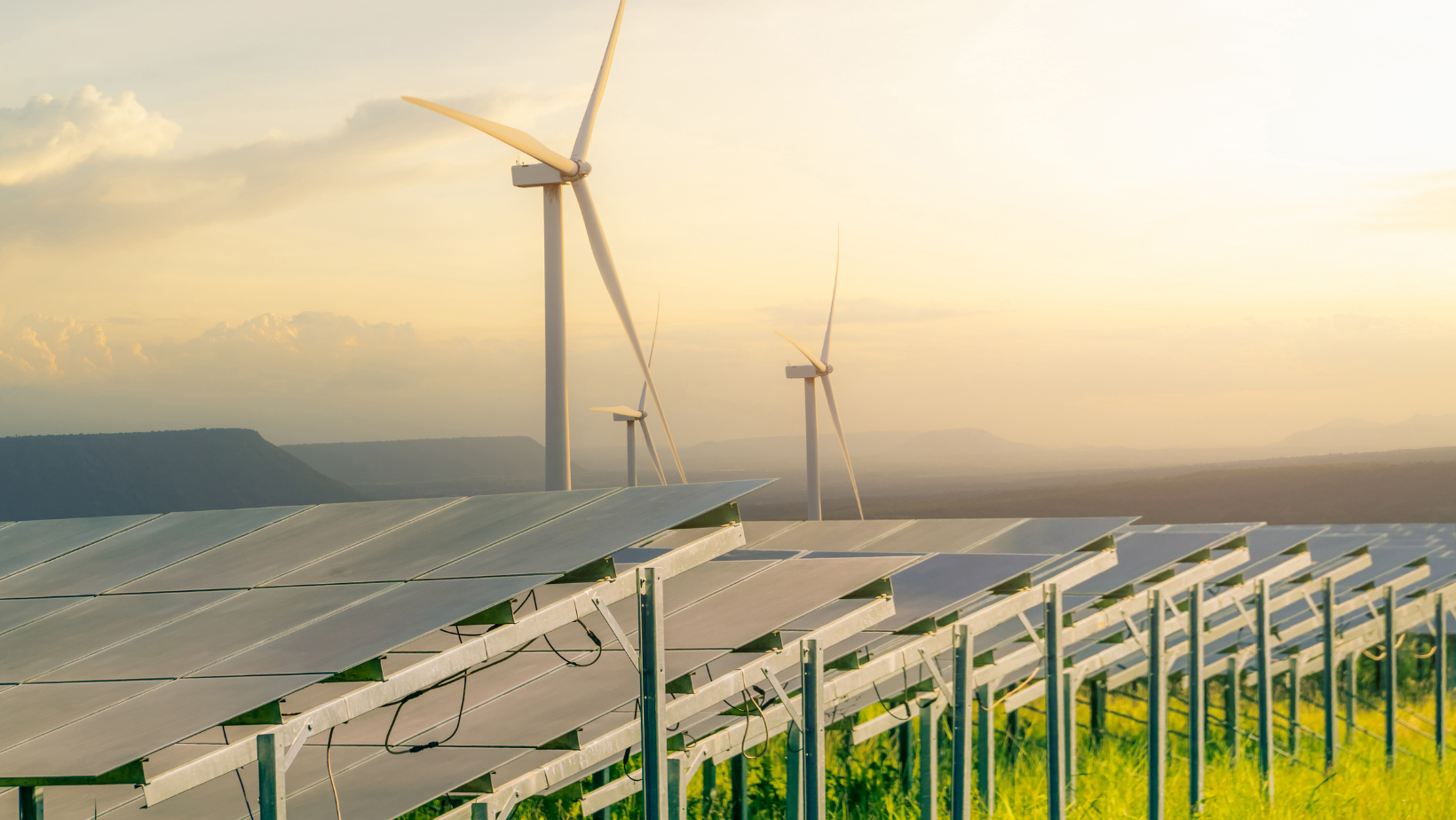
With the rising cost of energy production, more and more people are looking for ways to reduce their carbon footprint and save money on energy costs. The terms green and sustainable energy have become increasingly popular over the years as people look for ways to help protect the environment by using renewable energy sources. But what is the difference between these two types of energy? In this article, we will explore what green and sustainable energy are, the different sources of each type, and how they can benefit us all. Keep reading to learn more
What is Green Energy?
Green energy is generated from renewable sources like wind, solar, hydro, and geothermal. It is a sustainable alternative to conventional sources like coal, oil, and natural gas, contribute to carbon emissions and environmental damage. Green energy is essential to combat climate change and reduce dependence on fossil fuels.
One of the most well-known examples of green energy is solar power. Solar panels capture sunlight and convert it into usable energy, providing a clean and renewable source of electricity. Similarly, wind turbines harness the power of the wind to produce electricity, offering a sustainable alternative to traditional power generation.
The importance of business green energy cannot be overstated. Besides reducing greenhouse gas emissions and slowing global warming, it helps conserve natural resources and protect the environment. Harnessing renewable energy sources also has economic benefits, such as job creation and increased energy security.
The shift towards green energy is crucial for a sustainable future. We can ensure a healthier planet for future generations by utilizing clean and renewable energy sources. It’s time to embrace green energy and positively impact the environment.
What is Sustainable Energy?

Sustainable energy is generated from renewable sources that can be replenished over time, such as wind, solar, hydro, and geothermal power. Unlike non-renewable energy sources like oil and coal, which are finite, sustainable energy can be used without depleting the Earth’s resources. It is also known as clean energy because it produces little to no air, water, or land pollution.
Sustainable energy is essential for a sustainable future. It helps reduce carbon emissions and slows global warming while conserving natural resources and preserving the environment. In addition to environmental benefits, sustainable energy has economic benefits such as job creation and increased energy security.
Types of Renewable Energy Sources

Renewable business energy tariffs are becoming increasingly popular as people look for ways to reduce their carbon footprint and save money on energy costs. The most common renewable energy sources include the following:
Solar Power
Solar power is a shining star when it comes to renewable energy sources. Harnessing the sun’s power, solar power utilizes photovoltaic cells to capture sunlight and convert it into electricity. These amazing cells can turn sunlight into usable energy, providing a sustainable and clean alternative to fossil fuels.
The applications of solar power are as diverse as the rays of the sun itself. From heating buildings and providing hot water to cooking, lighting, and even powering entire neighborhoods, solar power is illuminating the way toward a greener future. So let the sun beam down upon us, for with solar thermal energy, we can harness it to brighten our lives and preserve the planet.
Wind Power
Wind power is a rapidly growing and highly utilized form of renewable energy. With increased installed capacity year after year, it has become an integral part of the clean energy transition. Just picture rows upon rows of majestic wind turbines dotting the landscape, harnessing the power of the wind and converting it into usable energy. These towering structures are no mere decoration but rather a testament to the incredible potential of wind energy.
Based on Betz’s law principles, wind turbines capture the wind’s kinetic energy and convert it into electrical power. These magnificent machines come in various sizes and can generate impressive energy. From the sleek and slender blades of small turbines spinning on rooftops to the colossal turbines on wind farms, the output capabilities are truly awe-inspiring. The growth and effectiveness of wind power are undeniable. As we harness this clean and renewable energy source, we reduce our dependence on fossil fuels and mitigate the environmental damage caused by greenhouse gas emissions. So, let’s embrace the power of the wind and propel ourselves toward a sustainable future.
Hydropower
Hydropower, a captivating display of harnessing the force of nature, is a renewable energy source that uses the power of flowing water to generate electricity. From thunderous cascades to tranquil rivers, hydropower plants come in all shapes and sizes and remarkably impact our energy landscape. The process is simple yet extraordinary.
As water flows, it propels turbines connected to generators, transforming the kinetic energy into electrical energy. Unlike fossil fuels, which emit greenhouse gases and contribute to climate change, hydropower produces clean and green energy with virtually no emissions. There are two main types of hydropower systems, conventional hydropower and run-of-the-river hydroelectricity.
Conventional hydropower involves the construction of dams and reservoirs, allowing for the storage and controlled release of water to generate electricity. While this method provides reliable power, it can disrupt ecosystems and lead to the displacement of communities.
On the other hand, run-of-the-river hydroelectricity systems operate without large dams and reservoirs. This method minimizes environmental impact and preserves the river’s natural flow by diverting a portion of a river’s flow through turbines. It is a more sustainable and fish-friendly approach, ensuring the continuity of river ecosystems.
Geothermal Energy
Geothermal energy, a green power source, harnesses the thermal energy stored beneath the Earth’s crust and converts it into electricity. This remarkable energy has been utilized for centuries, with ancient civilizations soaking in natural hot springs for their healing properties. Today, we have taken this concept further by tapping into the Earth’s internal heat to generate power using steam turbines.
Imagine the vast potential of geothermal energy found in hotspots around the globe. From the geysers of New Zealand to the bubbling mud pools of the USA’s Yellowstone National Park, these regions are rich in thermal energy waiting to be harnessed. Other hotspots include Mexico’s volcanic landscapes, Indonesia’s geologically active zones, the Philippines’ remote islands, and Italy’s bustling volcanic region. These areas provide a sustainable energy source, boost local economies, and reduce greenhouse gas emissions.
Geothermal energy is a game-changer in our pursuit of a greener future. By utilizing this abundant source of naturally occurring heat, we can reduce our reliance on fossil fuels and mitigate the impacts of climate change. It’s time to turn up the heat on our energy production and tap into the power beneath our feet. Geothermal energy is the way forward, providing us with a sustainable, reliable, green power source for future generations.
Biomass Energy
Biomass energy, a lesser-known but mighty contender in the sustainable energy game, has quietly made waves (or rather, burning flames) in the quest for cleaner power sources. While wind turbines twirl and solar panels bathe us in their radiant glow, biomass energy takes a different approach, harnessing the power of organic materials like wood, timber, landfills, and agricultural waste. It’s like a bonfire of sustainability, turning what might have been waste into a source of usable energy.
But what makes biomass energy truly remarkable is its renewable nature. Unlike fossil fuels that have taken eons to form, biomass can be constantly replenished. While we might not be able to grow oil fields or nurture coal mines, we can cultivate forests, plant crops, and produce waste that fuels the fire of biomass energy.
Biomass energy has the potential to reduce carbon dioxide emissions when compared to fossil fuels significantly. By diverting waste from landfills or harnessing the energy emitted by rotting organic matter, biomass energy produces power and reduces the harmful greenhouse gases that contribute to climate change. It’s a win-win situation, where something that would have been discarded or left to decompose now becomes a valuable resource for generating sustainable energy. The future is looking pretty bright and…well, a little smoky too. But in a good way.
Advantages of Green and Sustainable Energy Sources

Green and sustainable energy sources offer several advantages over traditional, fossil fuel-based energy sources. These include:
Reduced Carbon Emissions
Reducing carbon emissions has become paramount in seeking a greener, more sustainable future. Green and sustainable energy sources are crucial in achieving this goal, producing significantly fewer carbon emissions than traditional fossil fuels. Renewable energy company sources such as wind and solar power lead the charge in this battle against climate change.
These sources produce zero carbon emissions during electricity generation, providing a clean and environmentally friendly alternative to fossil fuels. By harnessing the power of the wind and the sun, we can offset the need for environmentally damaging energy sources and take significant steps toward reducing our carbon footprint. With the ongoing threat of climate change, adopting green and sustainable energy sources is more important than ever. Not only do they provide a renewable and abundant energy source, but they also contribute to the mitigation of climate change by helping us move away from carbon-intensive energy production.
Reduced Dependence on Fossil Fuels
As we venture into a rapidly evolving world, it has become abundantly clear that our reliance on fossil fuels is not sustainable. The detrimental impact of carbon emissions on our environment, from global warming to air pollution, has sparked a growing urgency to adopt cleaner and more sustainable energy sources. Renewable energy generators, such as wind, solar, water, and organic material, are emerging as the heroes of our energy revolution.
One of the most significant advantages of utilizing renewable energy technology is the reduced dependence on fossil fuels. Unlike their fossil fuel counterparts, which are finite and depletable, renewable sources offer an infinite and abundant energy supply. This ensures the longevity and stability of our energy production and eliminates the need for environmentally damaging extraction methods.
In addition to their limitless nature, renewable resources promote energy security and independence. We can generate electricity locally by harnessing the power of wind, sun, water, and organic materials, freeing ourselves from the shackles of fossil fuel imports. This self-sufficiency makes us more resilient to geopolitical tensions and strengthens our economy by reducing our reliance on volatile fossil fuel markets.
The transition to green and sustainable energy sources is not merely an environmental imperative but an opportunity to reshape our future and create a cleaner, healthier, and more prosperous world. By reducing our dependence on the finite resources of the past and embracing the infinite power of the sun, wind, and water, we can pave the way for a greener future that prioritizes our planet’s needs and future generations’ well-being.
Increased Economic Growth Potential
Green and sustainable energy sources have immense potential to drive increased economic growth. Investing in energy efficiency technologies and infrastructure offers a cleaner and more sustainable way to meet our energy needs, creates new job opportunities, and stimulates economic development. The transition to renewable energy requires substantial investments in building solar farms, wind turbines, and hydroelectric power plants, upgrading our energy grids, and developing new energy storage solutions.
These investments create job opportunities across various sectors, from manufacturing and construction to engineering and research. The growth of the renewable energy industry stimulates local economies, attracting investment and fostering innovation. Additionally, green investments also positively impact the environment and public health, contributing to reducing carbon emissions and pollution. By shifting to renewable energy sources, we can significantly decrease our reliance on fossil fuels and reduce greenhouse gas emissions. This helps combat climate change, improves air quality, and reduces pollution-related health risks.
Improved Air Quality
Green and sustainable energy sources significantly impact improving air quality and reducing the health hazards associated with air pollution. Unlike fossil fuel burning, which releases harmful pollutants such as carbon dioxide, sulfur dioxide, and nitrogen oxides, renewable energy technologies produce little to no air pollutants. This helps combat climate change and immediately benefits our health and the environment.
Take solar power, for example. Solar panels convert sunlight into electricity without any emissions. Utilizing this clean energy source can power our homes and businesses without releasing harmful pollutants into the air. Similarly, wind power harnesses the energy from the wind to generate electricity, again without burning fossil fuels. On the other hand, hydropower uses the natural water flow to create clean electricity, avoiding the air pollution associated with traditional power generation. By embracing renewable energy sources and reducing our reliance on these polluting fuels, we can significantly improve air quality, reduce air pollution-related health issues, and create a safer and healthier environment for everyone without hefty energy bills.
Disadvantages of Green and Sustainable Energy Sources

While green and sustainable energy sources like solar, wind, and hydropower have undeniable environmental benefits, they are not without their drawbacks. Here are some of the most common drawbacks associated with renewable energy sources:
- Expensive Installation Costs: Renewable energy technologies require expensive upfront investments to install and maintain. This can challenge those with limited resources, especially in developing countries.
- Impact on Wildlife: In some cases, renewable energy projects can have an adverse effect on wildlife habitats and populations. Wind turbines, for example, are known to cause injury or death to birds and other wildlife.
- Intermittent Sources: Renewable energy sources (such as solar and wind) are often intermittent, meaning energy production is inconsistent. This can pose challenges for utilities trying to cost-effectively provide reliable power to customers.
- Not Always Readily Available: In some locations, renewable energy sources may not be readily available or accessible due to geographic or climatic conditions.
- Requires New Infrastructure: To use renewable energy sources, new infrastructure must be implemented. This can require costly investments in equipment and technology.
- Can Disrupt Traditional Energy Systems: Integrating renewable energy sources into existing energy systems may require changes and upgrades to the existing infrastructure, which can be costly and disruptive.
Factors to Consider when Selecting Green or Sustainable Energy Sources

Several important factors must be considered when selecting green or sustainable energy sources. These include the following:
- Cost: Cost is always an important factor when selecting energy sources. The upfront cost of installation and implementation and the cost of ongoing maintenance must be factored into the decision-making process.
- Availability: It’s important to consider the availability of renewable energy sources in your area and any geographic or climatic restrictions that may limit their use.
- Environmental Impact: Consider the potential environmental impacts associated with the renewable energy source you are considering. This may include its impact on wildlife, air quality, and other ecosystems.
- Economic Impact: Evaluate the economic implications of using renewable energy sources in your area. This includes the cost savings achieved by using green or sustainable energy sources and any job creation or other economic benefits associated with their implementation.
Conclusion
Green and sustainable energy sources are essential for creating a healthier environment and reducing our reliance on fossil fuels. Investing in green energy equipment can reduce air pollution and your energy bill significantly. However, some drawbacks are associated with green and sustainable energy sources, such as expensive installation costs, impact on wildlife, intermittent sources not always readily available, and requiring new infrastructure. Ultimately, the decision to embrace green and sustainable energy sources must be made on a case-by-case basis, considering all the associated benefits and drawbacks.
